What Is Rattan and How Is It Used in Furniture Making?

Rattan has been known as a raw material that is loved worldwide for its beauty and unique style. Due to its natural color, it beautifies your patio, becoming indispensable furniture for both indoor and outdoor use. Let’s find out how important Rattan is and look at step by step how a furniture designer can turn a raw rattan material into a furniture masterpiece.
What is Rattan?
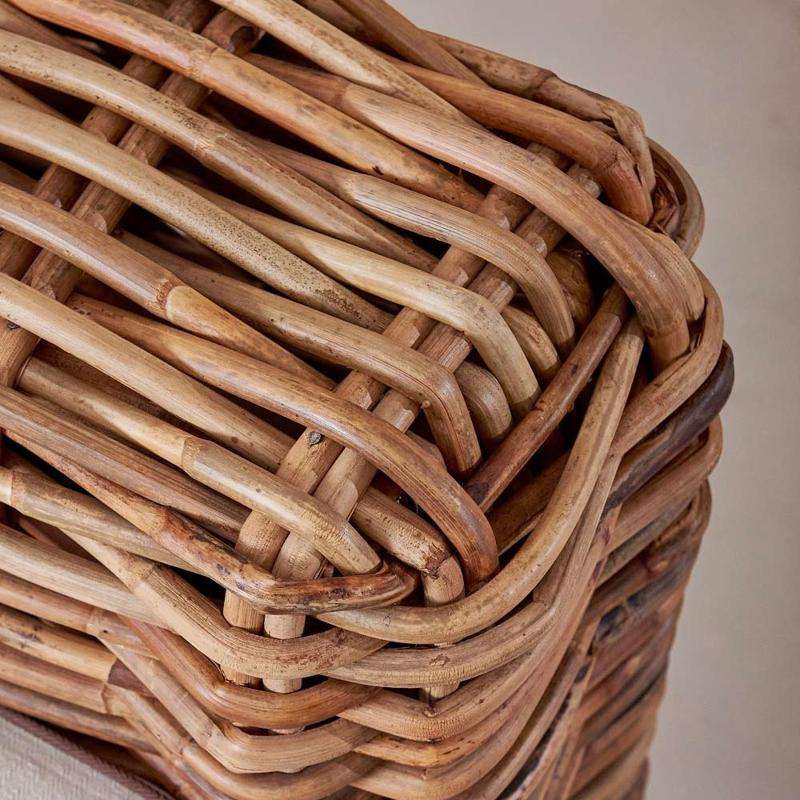
Rattan materials being applied in furniture industry
Rattan is a type of vine. It grows in tropical climates, particularly in Southeast Asia, and is known for its flexibility, strength, and durability.
Rattan is one of the materials available for mass-produced furniture. It is solid and can be steamed and bent into all sorts of shapes. Rattan furniture is solid and also very durable, and able to last for generations.
Rattan is harvested for its strong, solid core which can be used whole or split into thinner strips. The outer skin of rattan is typically peeled off and discarded in furniture making.
Rattan flexibility allows it to be woven into intricate patterns, creating sturdy yet lightweight structures. The weaving can vary from simple designs to complex patterns depending on the desired style of the furniture.
History of rattan
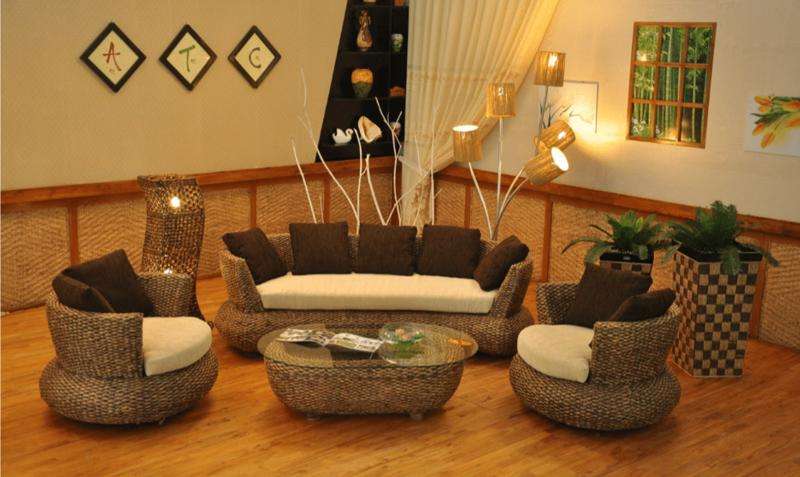
The history of rattan dates back thousands of years and spans across various cultures and continents
Rattan is a type of vine that grows predominantly in tropical regions of Africa, Asia, and Australasia. Its use can be traced back to ancient times, where indigenous peoples utilized it for a wide range of purposes.
Early civilizations in Southeast Asia and Africa used rattan for making baskets, containers, and simple furniture due to its flexibility and durability.
Overtime, rattan became a valuable commodity in trade networks across Asia, particularly in the regions of modern-day Indonesia, Malaysia, and the Philippines. It was traded for centuries as a raw material for furniture and handicrafts.
In the 20th century, rattan furniture became popular globally for its lightweight, durable, and environmentally friendly qualities. It became a staple in both indoor and outdoor furniture designs.
In summary, rattan’s history is attached with human civilization, from its early use by native cultures to its global trade and popularity in modern furniture design. Its enduring appeal lies in its natural strength, flexibility, and eco-friendly, making it a beloved material in the world of craftsmanship and patio design.
Different Types of Rattan
Cane Rattan

Handmade cane rattan with long, light colored
Cane rattan typically refers to rattan that has been processed and prepared for use in furniture making and other crafts. It is commonly used for weaving furniture and wrapping chairs and frames around due to its flexibility. Cane rattan has a natural shine, which is why cane chairs are typically left in their natural color.
Cane rattan furniture requires regular maintenance to preserve its appearance and longevity. This may include periodic cleaning with a damp cloth to remove dust and dirt. Additionally, protecting cane rattan furniture from prolonged exposure to direct sunlight and excessive humidity helps prevent it from drying out or becoming faded over time.
Reed Rattan

Reed rattan
Reed rattan typically refers to a type of furniture or weaving material that combines reed and rattan components. Let me explain this combination.
Reed:
- Reed refers to tall, slender grass-like plants that grow in wetlands or marshy areas. They are known for their straight and uniform stems.
- Reed is commonly used in weaving and basketry due to its flexibility and ability to be tightly woven into various patterns.
- It is lightweight and often has a natural light brown color.
Rattan
- Rattan, as mentioned earlier, is a vine-like plant that grows in tropical regions. It is known for its solid core and flexibility.
- Rattan is used in furniture making, where its strong but flexible stems are woven into intricate patterns or used as structural elements.
In the context of “Reed Rattan” furniture, it refers to furniture pieces in which the frame of its structure is made from rattan, and the weaving or decoration are made of reed. Reed rattan furniture often combines the natural beauty of both materials. It can have a rustic or organic appearance, blending well with various interior design styles, enhancing its aesthetic appeal.Reed rattan furniture is lightweight yet sturdy, suitable for both indoor and covered outdoor settings. It requires similar maintenance as regular rattan furniture, including occasional cleaning and protection from direct sunlight and excessive humidity.
Synthetic Rattan
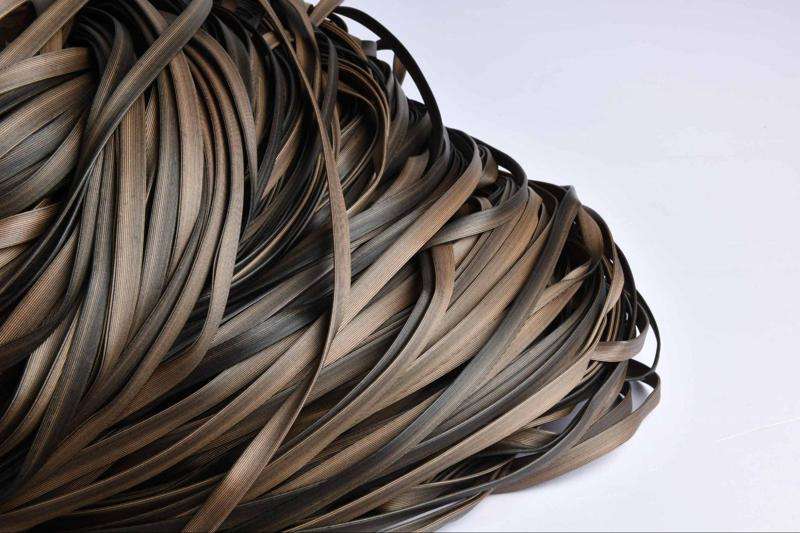
A close-up of a pile brown Synthetic rattan
Synthetic rattan, also known as resin rattan or all-weather rattan, is a man-made alternative to natural rattan. And it is used for patio furniture and home decoration. Synthetic rattan can easily withstand moisture and direct sunlight. Here’s some information about how Synthetic rattan is made and used.
Material Composition:
- Synthetic rattan is typically made from polyethylene (PE) or polypropylene (PP) resin fibers.
- These materials are woven together to mimic the appearance and texture of natural rattan.
- Sometimes, synthetic rattan may also blend other materials like fiberglass for added strength and durability.

A living room furnished blended in nature vibe that made of Synthetic rattan
Appearance and Texture:
Synthetic rattan is designed to replicate the look of natural rattan but with more uniformity in color and texture. It can come in various colors, including shades of brown, gray, black, and even white.The texture of synthetic rattan can vary from smooth to textured, depending on the manufacturing process and desired style.One of the main reasons why synthetic rattan is being chosen is its marvelous weather resistance. Making it suitable for patio furniture that can withstand rain and many types of weather that a real rattan can’t. Synthetic rattan is generally more durable than natural rattan because it is not prone to cracking, splitting, or becoming brittle over time.
Manau rattan
Manau rattan also known simply as Manau is listed as one of the most wanted types of rattan due to its durability and strength. It is found in Africa, India, China, VietNam and Malaysia.
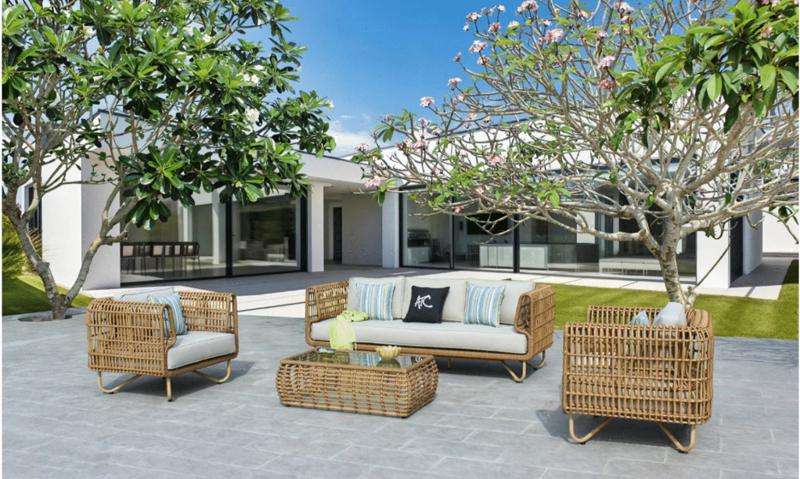
Manau rattan furniture takes spotlight in living space
It’s mostly used for rattan furniture and handicrafts. Manau is known for its natural golden-brown color and smooth surface texture.Due to its strength and durability, Manau rattan is primarily used in the construction of furniture frames and structural supports.It is often added in making sturdy chairs, tables, and other furniture pieces that require a solid base.While Manau rattan is primarily used for its core strength, it can also be split and woven into finer strands for decorative weaving patterns.
What is Rattan Furniture Made Of?
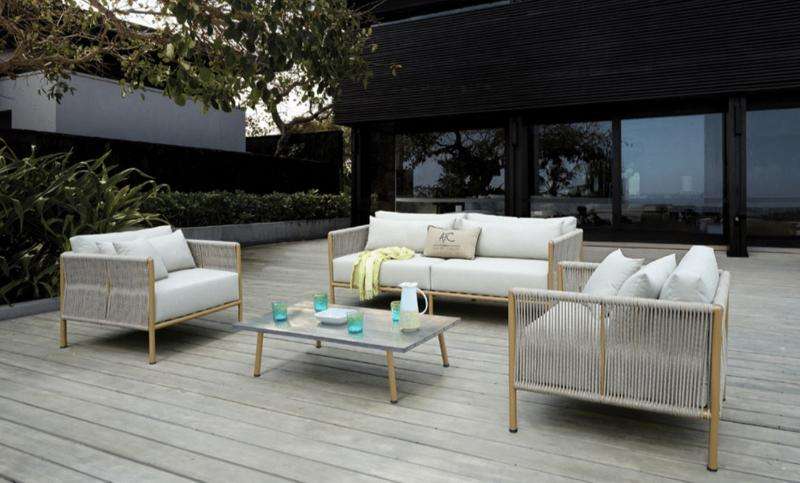
Rattan furniture has a great taste in spotting outdoor
Rattan furniture is primarily made of rattan, a natural material derived from the stems of climbing palms in Asia. Here are the main components and materials used in rattan furniture construction:
Rattan Core
- The core of rattan stems is the primary material used in furniture making. It is strong, flexible, and lightweight, making it ideal for weaving and constructing furniture frames.
- Rattan core varies in thickness depending on the specific type of rattan used (e.g., Manau rattan,…).
Binding Material
- Natural bindings, such as rattan strips or other flexible natural fibers, are used to secure and create weave patterns in rattan furniture. These bindings help hold the rattan pieces together securely.
Frame Material
- In some cases, rattan furniture may have a frame constructed from solid rattan poles or other materials like wood or metal. This frame provides structural support and stability to the furniture piece.
Optional Additions
- Depending on the design and style of the furniture, additional materials may be combined. For example, cushions for seats and backs are often made from fabric or foam to enhance comfort.
- Glass, wood, or other materials may also be used as tabletops in rattan furniture designs.
Finishing and Protection
- Rattan furniture may be finished with varnish, lacquer, or other protective coatings to enhance its durability and appearance. These finishes also help protect the rattan from moisture and sunlight exposure.
Rattan furniture is appreciated for its natural beauty, durability, and versatility. It combines traditional craftsmanship with modern design aesthetics, making it a popular choice for both indoor and outdoor. Proper care and maintenance can prolong the lifespan of rattan furniture, ensuring it remains a timeless addition to any home or garden.